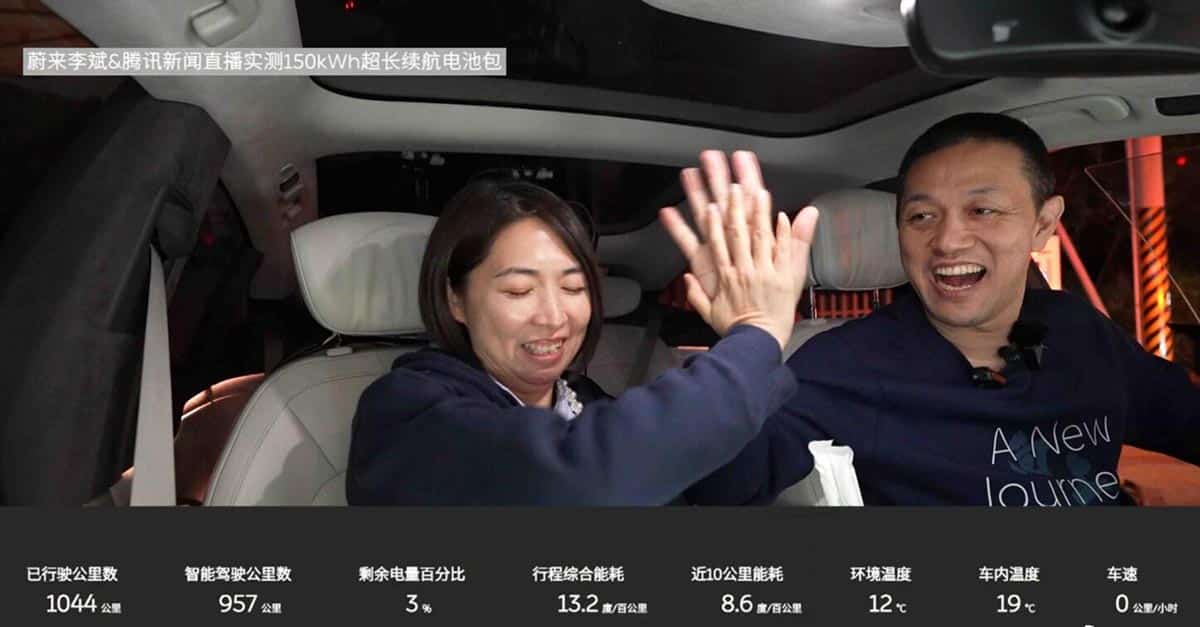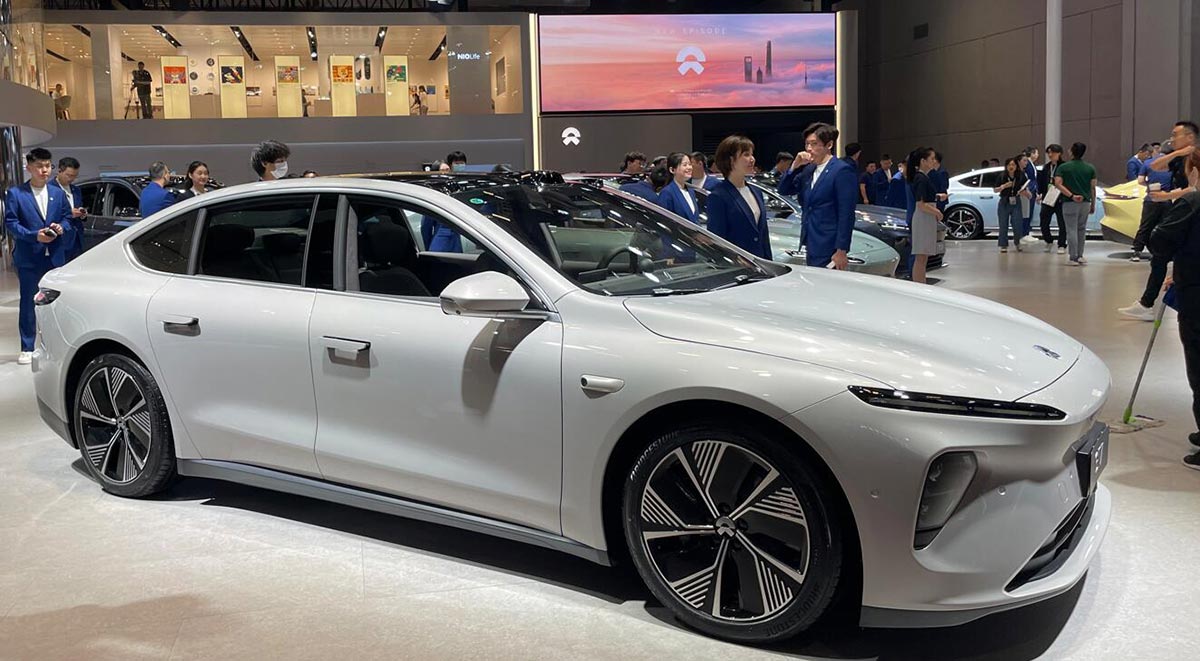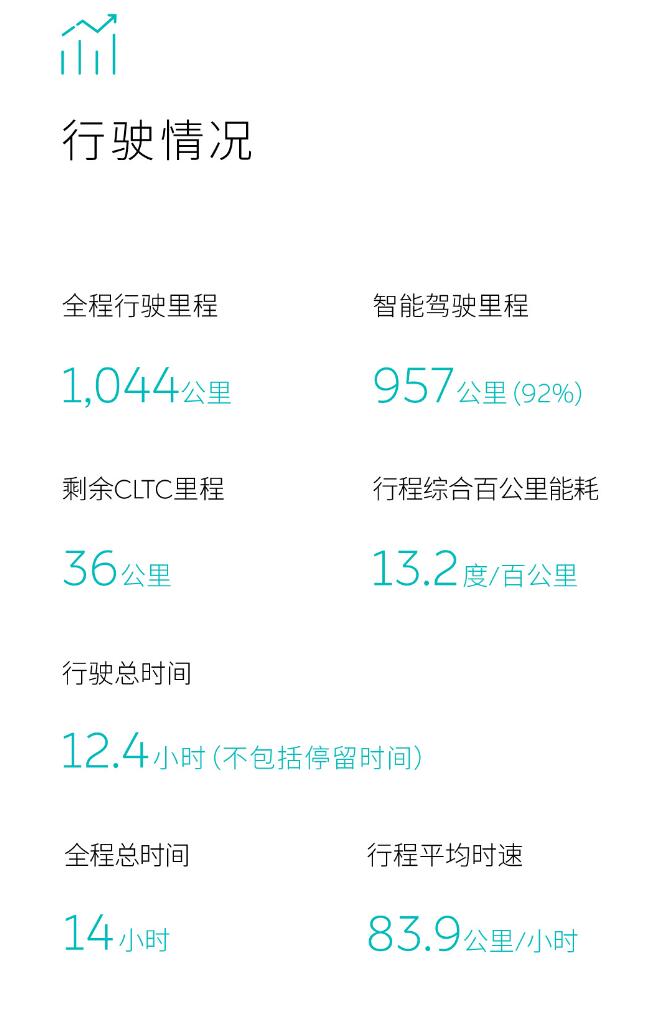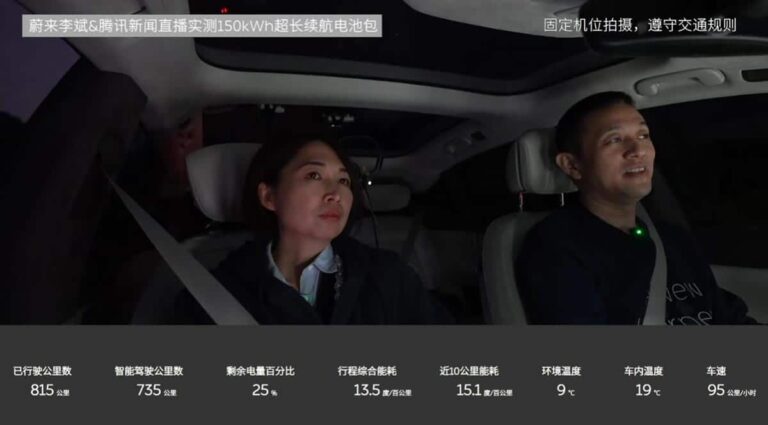After 1,044 kilometers of driving, the Nio ET7 has a remaining charge of 3 percent or 36 kilometers of remaining CLTC range.

(Nio concludes 150-kWh battery pack range challenge with 1,044 kilometers of ET7 driving range.)
At 1,044 kilometers, this is the driving range that Nio's (NYSE: NIO) 150-kWh semi-solid battery pack has achieved on a single charge as seen in a real-life test, and is the longest range of any mass-produced electric vehicle (EV) to date.
"The 150-kWh battery range challenge is complete with a final score of 1,044 kilometers!" William Li, Nio's founder, chairman and CEO, announced on the night of December 17.
Li set off from a battery swap station in Shanghai at 6:32 am yesterday and drove the ET7 sedan with the 150-kWh battery pack to a highway service area in Xiamen, Fujian province at 8:33 pm after 14 hours and 1 minute.
After 1,044 kilometers of driving, the ET7 had a remaining charge of 3 percent or a remaining CLTC mileage of 36 kilometers.
"The completion of this range challenge proves the strong product power of the 150-kWh ultra long range battery pack," Li wrote on Weibo yesterday night.
"This battery is currently the highest energy density battery pack mass-produced globally, with excellent safety performance, and more importantly all (Nio) models on sale can be flexibly upgraded to get this 150-kWh battery through the Nio battery swap system," Li added.
Li turned on Nio's ADAS (Advanced Driver Assistance System) software, NOP+ (Navigate on Pilot Plus), for 92 percent of the journey, or 957 kilometers.
NOP+ not only fully demonstrates an excellent ability to relieve driving stress, but also makes a significant contribution to reducing power consumption, Li said.
It's worth noting that the current testing conditions are not favorable for EVs, especially with the recent cold wave in several parts of China, with temperatures in Shanghai dropping below 0 degrees Celsius.
Li departed from Shanghai at -2 degrees Celsius, with a high of 12 degrees Celsius along the way, an average temperature of 20 degrees Celsius inside the vehicle, and a load of about 190 kilograms.
The ET7 was driven for 12.4 hours, Li for about 8 hours and Nio vice president Shen Fei for the rest of the mileage, excluding stopovers. Chinese law requires drivers not to drive for more than four hours straight, or more than eight hours in a single day.
The ET7's total combined energy consumption was 13.2 kWh per 100 kilometers, with an average speed of 83.9 kilometers per hour for the entire trip.
Nio unveiled the 150-kWh semi-solid-state battery when it launched the Nio ET7 at the Nio Day 2020 event on January 9, 2021.
(A Nio ET7 on display at the April 2023 Shanghai auto show. Image credit: CnEVPost)
On June 30 this year, Nio's supplier, Beijing WeLion New Energy Technology, began delivering 360 Wh/kg lithium battery cells to it and held a delivery ceremony in Huzhou, Zhejiang province, where its production base is located.
Nio's NT 1.0 and NT 2.0 platform-based models have completed validation and regulatory filings for the pack, and the team conducted a variety of tests, with the pack's performance, including range, exceeding expectations, Li said before beginning the range challenge.
The 150-kWh battery pack is the largest capacity currently mass-produced in the Chinese passenger car segment, with six times the cooling ability of a regular pack, Nio said in a poster yesterday night.
Nio didn't reveal more about the battery pack's specifications, though its previously updated user manual provides some information.
Like Nio's other battery packs, the 150-kWh pack measures 2,062 millimeters in length, 1,539 millimeters in width, and 185.6 millimeters in height, according to the company's user manual, which was updated in July.
The 150-kWh pack weighs 575 kilograms, which is 20 kilograms, or 3.6 percent, higher than the 555 kilograms of Nio's 100-kWh pack.
Nio is not the first to make a vehicle with a range of 1,000 kilometers, but is set to be the first brand to make the ultra-long-range battery pack available on a large scale.
GAC Aion unveiled the Aion LX Plus model with a CLTC range of up to 1,008 kilometers as early as the end of November 2021, and in January 2022 made the model officially available.
However, the model with that battery pack starts at RMB 469,600 ($65,970), roughly double the price of the regular Aion LX Plus, even though it's far inferior to the regular version in terms of other specs.
The announcement of the ultra-long-range Aion LX Plus model initially generated a brief buzz, but it's rarely been mentioned again in the past 2 years. It's unclear if the model is still being delivered, or how many units have been accumulated.
Deliveries of the Zeekr 001 powered by CATL's ultra-long-range Qilin Battery began on May 16, boasting a 140 kWh capacity and a CLTC range of up to 1,032 km.
However, Zeekr had previously said that the Qilin Battery option is limited to just 1,000 units, and consumers will need to pay an additional RMB 103,000. The regular version of the Zeekr 001 currently starts at RMB 269,000 yuan.
Nio is also facing a similarly high-cost issue with the 150-kWh battery pack, which co-founder and president Qin Lihong mentioned earlier this year as costing almost as much as an ET5 sedan. At the time, the regular ET5 was priced at RMB 328,000.
However, Nio's battery swap mode enables owners to experience the pack without having to have the large battery pack all the time.
On July 20, Nio started allowing owners to upgrade their 70/75 kWh standard-range battery packs to 100 kWh long-range battery packs on a daily basis. If the 150-kWh battery packs are offered as a per-day rental option when they become available, there may be an acceptable price for owners.
Currently Nio owners who upgrade to the 100-kWh battery pack on a daily basis pay an additional RMB 50 per day, while not exceeding RMB 880 per 31-day period, which is also the cost of upgrading on a monthly basis.
($1 = RMB 7.1184)



